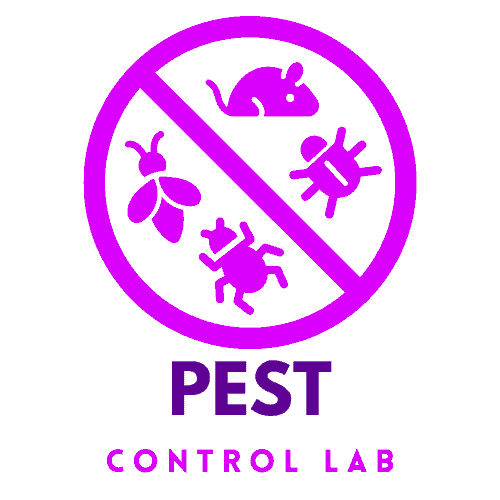Termites Prevention and Treatment: Essential Insights
Key Takeaways
- Early detection and identification of termite species are crucial.
- Implementing preventive measures can significantly reduce the risk of infestation.
- Choosing the right treatment requires considering the termite species, infestation level, and environmental impact.
- Professional pest control services play a vital role in effective termite management.
Introduction
Have you ever fretted over the silent destroyers of homes known as termites? These tiny critters might be out of sight, but they can wreak havoc on our most cherished spaces. Before you know it, the structural integrity of your home could be compromised. But fear not! Understanding the enemy is the first step toward safeguarding your abode. In this guide, we’ll dive deep into the world of termites – from spotting the sneaky signs of their presence to exploring the most effective countermeasures. Let’s embark on this journey together to keep your sanctuary safe and sound.
Understanding Termites

When you hear “termite,” you might envision a single type of pest gnawing away at your home. However, the termite world is surprisingly diverse, with over 2,000 species worldwide. In the U.S. alone, we commonly contend with three main types: subterranean, dry wood, and damp wood termites. Subterranean termites are the most notorious, thriving in moist, hidden environments and capable of creating sprawling colonies. These critters love to build mud tubes for travel, which is a dead giveaway of their presence.
On the other hand, dry wood termites prefer, you guessed it, dry wood. They don’t need soil contact and are often found in attic wood, causing damage silently and without early visible signs. Dampwood termites, as their name suggests, feast on timber with high moisture content, often wood in contact with the ground or with plumbing leaks.
Understanding the nuances between these species is crucial. Each has preferences for climate, wood, and habitat, influencing how and where they attack. Recognizing these differences can help you better protect your home and choose the most effective treatment options. Knowing your enemy makes you one step closer to keeping your home termite-free.
Signs of Termites Infestation

Detecting termites early can save you a world of stress and costly repairs. But these critters are masters of stealth, often causing significant damage before they’re even noticed. Here are the key signs that suggest termites might be lurking in your home:
- Mud Tubes: These pencil-sized tunnels are a hallmark of subterranean termite activity, providing safe passage between their underground colonies and food source—your home.
- Discarded Wings: After termites swarm to start new colonies, they shed their wings. Finding these discarded wings near windowsills or doors is a telltale sign of termite presence.
- Hollow Wood: Termites consume wood from the inside out, leaving a hollow sound when you tap on what used to be solid wood. This sign often indicates an advanced infestation.
- Frass: Drywood termites push out small piles of wood-colored droppings called frass from their tunnels. Spotting these tiny pellets around your home can signal an infestation.
- Visible Damage: While termites prefer to remain hidden, sometimes their damage becomes visible through blistered wood surfaces or even termite bodies.
Awareness of these signs is your first line of defense. Regular inspections around your home, especially in areas prone to moisture and hidden wood surfaces, can help catch an infestation early. If you spot any of these signs, it might be time to call the professionals before the damage spreads.
Preventive Measures to Protect Structures
Prevention is undoubtedly better than cure, especially when it comes to termites. Implementing effective strategies can significantly reduce the risk of infestation, saving you from potential headaches and financial strain down the line. Here are some key preventive measures:
- Eliminate Moisture: Termites are drawn to moisture. Ensure your home has proper drainage, repair leaks promptly, and use dehumidifiers in damp areas to discourage termite attraction.
- Maintain a Safe Distance Between Soil and Wood: Ensure an 18-inch gap between soil and any wood parts of your home. This space can act as a barrier to termites seeking new territories.
- Regular Inspections: Periodically inspect your home for signs of termite activity, especially in wood structures, foundation walls, and crawl spaces. Early detection can prevent widespread damage.
- Use Treated Wood: If you’re building or repairing your home, consider using termite-resistant wood or treating wood with termite repellents. It’s an effective way to deter termites from taking up residence.
- Clear Debris and Wood from Around Your Home: Termites feed on cellulose found in wood. Removing fallen trees, firewood, and any form of wood debris near your home can reduce the risk of attracting termites.
Integrating these measures into your regular home maintenance routine can create a less inviting environment for termites. Remember, the goal is to make your home as unappealing to termites as possible, effectively keeping them at bay.
Treatment Options for Termite Infestation
Once termites have breached your defenses, choosing an effective treatment to mitigate and eventually eradicate the infestation is crucial. Here’s a breakdown of the primary treatment options:
- Liquid Termiticides: These chemical barriers are applied to the soil around and beneath your home, creating a lethal barrier for termites. They are effective for preventing and treating infestations, ensuring that termites cannot enter without exposure to the pesticide.
- Bait Systems: Bait stations are strategically placed around your property to lure termites. Once termites feed on the bait, they return the toxin to their colony, reducing the population. This method is less invasive and can be an excellent option for long-term control.
- Borate Treatments: Applied directly to wood surfaces in your home, borate treatments soak into the wood, creating a long-lasting deterrent against termites. This method is handy as a preventive measure during the construction phase of homes.
- Fumigation: In cases of severe dry wood termite infestation, fumigation may be necessary. This process involves tenting your home and introducing a gas that permeates all wood surfaces, killing the termites. It’s a comprehensive solution but requires vacating the house for several days.
Each treatment has pros and cons, depending on the extent of the infestation and the type of termites you’re dealing with. It’s often best to consult a pest control professional to determine the most suitable method for your situation.
Choosing the Right Termite Treatment
Deciding on the best termite treatment can feel overwhelming. The right approach hinges on several factors, including the termite species, the extent of the infestation, and the structure of your home. Here’s a simplified guide to making an informed decision:
- Identify the Termite Species: Different termites require different treatments. For example, subterranean termites might need soil treatments, whereas drywood termites could be more effectively managed with fumigation or spot treatments.
- Assess the Infestation Level: The extent of the infestation plays a crucial role. Minor, localized infestations may benefit from spot treatments or bait systems, whereas widespread infestations might necessitate more aggressive approaches like fumigation.
- Consider the Environmental Impact: If eco-friendliness is a concern, bait systems and borate treatments are less invasive and use fewer chemicals than liquid termiticides and fumigation.
- Professional Consultation: Engaging a pest control professional can provide a tailored strategy that considers all these factors. They can offer insights into your situation’s most effective, efficient, and cost-effective treatment plan.
- Preventive Measures Post-Treatment: Regardless of the chosen treatment, integrating preventive measures ensures your home remains unattractive to termites, safeguarding against future invasions.
Choosing the right termite treatment balances effectiveness, safety, and environmental considerations. With the correct strategy, you can reclaim your home from termites and restore peace of mind.
The Role of Professionals in Termites Prevention and Treatment
When termites invade, the expertise of a pest control professional can be your greatest ally. These specialists possess the knowledge, tools, and experience necessary to accurately identify the termite species, assess the severity of the infestation, and recommend the most effective treatment plan. Here’s why enlisting their help can be a wise decision:
- Accurate Identification: Professionals can distinguish between termite species and other pests, ensuring the selected treatment targets the specific problem.
- Comprehensive Assessment: They conduct thorough inspections to determine the extent of the infestation and the potential damage, providing a clear picture of the situation.
- Customized Treatment Plans: Based on their assessment, professionals can tailor a treatment strategy that addresses the unique aspects of your home and infestation, maximizing effectiveness while minimizing harm to your property and the environment.
- Advanced Solutions: Pest control experts have access to the latest and most advanced treatment methods, some of which are unavailable to the general public.
- Preventive Advice: Beyond treating the current infestation, professionals can offer invaluable advice on preventing future termite problems, ensuring your home remains protected long-term.
Investing in professional pest control services can save you time, money, and stress in the long run. Their expertise addresses the immediate issue and helps safeguard your home against future invasions, making them integral to termite prevention and treatment.
Conclusion
In the silent battle against termites, knowledge and preparedness are your best defenses. From recognizing the early signs of an infestation to implementing robust preventive measures and selecting the right treatment, every step you take is crucial in protecting your home. Remember, termites might be persistent, but you can keep your home safe and sound with the right strategies and professional guidance. Don’t wait for the signs; act now to safeguard your sanctuary. After all, your home is more than a structure; it’s a haven worth protecting from these unseen invaders.
FAQs:
- How often should I inspect my home for termites?
- Annually, or more frequently, if you live in an area prone to termite activity.
- Are DIY termite treatments effective?
- While some DIY methods can offer temporary relief, professional treatments are more reliable for thorough eradication and long-term prevention.
- Can termites be completely eradicated?
- With the right approach and ongoing preventive measures, it’s possible to effectively manage and significantly reduce termite populations in and around your home.





It’s perfect time to make some plans for the future and it’s time to be happy.
I have read this post and if I could I desire
to suggest you some interesting things or advice.
Maybe you could write next articles referring to this article.
I want to read more things about it!
Amazing blog! Is your theme custom made or did you download it from somewhere?
A design like yours with a few simple tweeks would really make my
blog stand out. Please let me know where you got your design. Thanks
My brother recommended I might like this web site He was totally right This post actually made my day You cannt imagine just how much time I had spent for this information Thanks